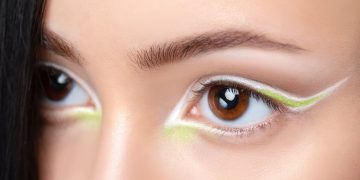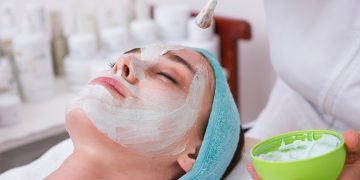Introduction: The Importance of Choosing the Right Skincare
Skincare is a highly personalized journey, and one of the most essential steps is choosing products suited to your skin type. With the variety of products available today, selecting the right skincare routine can be a daunting task. However, understanding your unique skin type—whether it’s dry, oily, combination, sensitive, or normal—is key to making informed decisions that will help you achieve healthy, glowing skin.
In this article, we’ll explore how to identify your skin type, key ingredients to look for (and avoid), tailored skincare routines, and expert tips for choosing the most effective products for your needs. Whether you’re dealing with dry patches, excess oil, sensitivity, or other concerns, this guide will equip you with the knowledge to build a customized skincare routine that works for you.
Chapter 1: Understanding Skin Types
What Are the Main Skin Types?
Dermatologists commonly classify skin into five primary types:
- Dry Skin: Often feels tight, rough, or flaky, with an overall dull appearance.
- Oily Skin: Characterized by excess sebum production, shiny skin, and often larger pores.
- Combination Skin: Features both oily areas (often the T-zone) and drier areas (typically the cheeks or outer parts of the face).
- Sensitive Skin: Easily irritated, leading to redness, stinging, or burning sensations.
- Normal Skin: Balanced skin that isn’t too oily or dry, with small pores and a smooth texture.
How to Identify Your Skin Type
There are several ways to determine your skin type. One simple method involves cleansing your face, waiting an hour, and observing how your skin feels. Here’s a quick guide:
- Wash your face with a gentle cleanser and pat dry.
- Wait for one hour—do not apply any products.
- Observe how your skin feels:
- Dry: Skin feels tight and might have flaky patches.
- Oily: Skin feels greasy, especially in the T-zone (forehead, nose, chin).
- Combination: Shiny T-zone, but dry or normal skin on the cheeks.
- Sensitive: Skin is red, irritated, or easily reacts to products.
- Normal: Balanced skin with no noticeable dryness or excess oil.
Another way to confirm your skin type is by using blotting sheets: press one on your face after a few hours and check the amount of oil it picks up. If it absorbs oil from all areas, you likely have oily skin. If only the T-zone, it’s combination, and if minimal to no oil, your skin is likely dry or normal.
Chapter 2: Skincare for Dry Skin
What Is Dry Skin?
Dry skin lacks sufficient moisture and oils, leading to a dull appearance and rough texture. People with dry skin often experience tightness, flakiness, and redness. It may feel irritated after cleansing, especially in colder climates, and can be more prone to fine lines and wrinkles.
Key Ingredients for Dry Skin
To nourish and restore moisture, people with dry skin should look for ingredients that are hydrating and nourishing:
- Hyaluronic Acid: A powerful humectant that draws moisture into the skin, helping it remain hydrated and plump.
- Glycerin: Another humectant that attracts water from the air, keeping your skin moisturized.
- Ceramides: Lipid molecules that help restore the skin barrier, preventing moisture loss.
- Shea Butter: Rich in fatty acids, it provides deep hydration and helps heal dry patches.
- Squalane: A lightweight, non-comedogenic oil that mimics the skin’s natural oils, offering moisture without clogging pores.
What to Avoid for Dry Skin
- Alcohol: Particularly drying alcohols like denatured alcohol, which can strip the skin of natural oils and worsen dryness.
- Fragrances: Synthetic fragrances can be irritating and exacerbate dryness, especially in sensitive skin.
- Harsh Exfoliants: Physical exfoliants like scrubs can irritate dry skin, leading to more flakiness and sensitivity.
Recommended Skincare Products for Dry Skin
- Gentle Cream Cleanser: Opt for cream-based, hydrating cleansers that do not strip the skin of its natural oils.
- Hydrating Toner: Choose an alcohol-free toner with calming ingredients like chamomile or aloe vera.
- Rich Moisturizer: Look for thick, emollient-rich moisturizers with ceramides and shea butter to lock in moisture.
- Hydrating Masks: Use masks once a week with ingredients like honey, glycerin, or aloe for added moisture.
Dry Skin Routine
- Cleanse with a gentle, hydrating cream cleanser.
- Tone with a soothing, alcohol-free toner.
- Serum: Apply a hydrating serum with hyaluronic acid or glycerin.
- Moisturize with a thick, nourishing cream.
- Sunscreen: Use a hydrating sunscreen with SPF 30 or higher.
Chapter 3: Skincare for Oily Skin
What Is Oily Skin?
Oily skin produces excess sebum, the natural oil produced by sebaceous glands. This overproduction can lead to a shiny appearance, clogged pores, blackheads, and acne. Oily skin is often characterized by larger pores, particularly in the T-zone (forehead, nose, chin), and can feel greasy throughout the day.
Key Ingredients for Oily Skin
The goal for oily skin is to balance sebum production without over-drying. Effective ingredients include:
- Salicylic Acid (BHA): A gentle exfoliant that penetrates pores to clear out excess oil and prevent breakouts.
- Niacinamide (Vitamin B3): Helps reduce oil production, minimize pores, and soothe inflammation.
- Clay (Kaolin or Bentonite): Absorbs excess oil and detoxifies the skin.
- Zinc: Known for its anti-inflammatory properties, it helps calm the skin and control oil production.
- Tea Tree Oil: A natural antimicrobial ingredient that targets acne-causing bacteria.
What to Avoid for Oily Skin
- Heavy Creams: Thick, greasy creams can clog pores and exacerbate oiliness.
- Alcohol-Based Products: While they may provide a quick mattifying effect, alcohol-based products can over-dry the skin, prompting it to produce even more oil.
- Comedogenic Ingredients: Certain oils and heavy creams can clog pores, leading to more breakouts.
Recommended Skincare Products for Oily Skin
- Gel Cleanser: Choose a gentle, foaming or gel-based cleanser that helps remove excess oil without stripping the skin.
- Exfoliating Toner: Use toners with salicylic acid or witch hazel to keep pores clear and control shine.
- Oil-Free Moisturizer: Look for lightweight, oil-free moisturizers that hydrate without adding excess oil.
- Clay Mask: Use once or twice a week to absorb excess oil and minimize pores.
Oily Skin Routine
- Cleanse with a gel or foaming cleanser.
- Tone with an exfoliating toner containing salicylic acid.
- Serum: Apply a mattifying serum with niacinamide or salicylic acid.
- Moisturize with a lightweight, oil-free moisturizer.
- Sunscreen: Choose an oil-free, non-comedogenic sunscreen.

Chapter 4: Skincare for Combination Skin
What Is Combination Skin?
Combination skin is characterized by both oily and dry areas. Typically, the T-zone (forehead, nose, chin) tends to be oily, while the cheeks and outer areas of the face are dry or normal. Managing combination skin involves finding a balance between moisturizing dry areas while controlling oil in the T-zone.
Key Ingredients for Combination Skin
- Hyaluronic Acid: Provides hydration to the dry areas without making the T-zone greasy.
- Niacinamide: Balances oil production and soothes the skin.
- Aloe Vera: Hydrates and calms irritation, making it suitable for both dry and oily areas.
- Jojoba Oil: Mimics the skin’s natural oils, helping to balance sebum production without clogging pores.
What to Avoid for Combination Skin
- Harsh Exfoliants: These can irritate the drier areas of the face.
- Heavy Creams: Thick creams may overwhelm the T-zone and cause breakouts.
- Alcohol-Based Products: Can dry out the skin and increase oil production in the T-zone.
Recommended Skincare Products for Combination Skin
- Gel-Based Cleanser: Gentle cleansers that balance both oil and hydration.
- Balancing Toner: A toner that provides hydration to dry areas while controlling oil in the T-zone.
- Multi-Tasking Moisturizer: A lightweight moisturizer that hydrates dry areas but controls oil in the T-zone.
- Clay Mask and Hydrating Mask: Alternate between clay masks for oily areas and hydrating masks for drier zones.
Combination Skin Routine
- Cleanse with a mild, gel-based cleanser.
- Tone with a balancing toner that hydrates and controls oil.
- Serum: Apply different serums to different areas (hydrating serum on dry areas and oil-controlling serum on oily areas).
- Moisturize with a lightweight moisturizer.
- Sunscreen: Use a broad-spectrum sunscreen suitable for combination skin.
Chapter 5: Skincare for Sensitive Skin
What Is Sensitive Skin?
Sensitive skin is easily irritated by products, environmental factors, or allergens. It may show signs like redness, stinging, or burning after using certain skincare products. People with sensitive skin may also experience allergic reactions, dryness, and rashes.
Key Ingredients for Sensitive Skin
- Centella Asiatica (Cica): Known for its soothing and anti-inflammatory properties, it helps heal irritated skin.
- Aloe Vera: Soothes and reduces redness.
- Oat Extract: Calms inflammation and prevents irritation.
- Panthenol (Vitamin B5): Hydrates and heals the skin without irritation.
- Ceramides: Reinforce the skin barrier and help lock in moisture.
What to Avoid for Sensitive Skin
- Fragrances: Synthetic fragrances can irritate sensitive skin and trigger allergic reactions.
- Alcohol: Drying alcohols like ethanol can strip the skin of its natural oils and worsen irritation.
- Harsh Exfoliants: Physical or chemical exfoliants with strong acids may cause stinging or redness.
Recommended Skincare Products for Sensitive Skin
- Fragrance-Free Cleanser: Use a creamy, non-foaming cleanser to gently remove dirt without disrupting the skin’s natural barrier.
- Soothing Toner: Choose a calming toner with ingredients like aloe vera or rose water.
- Moisturizer: A thick, fragrance-free moisturizer with ceramides and hyaluronic acid.
- SPF: A mineral sunscreen with zinc oxide or titanium dioxide.
Sensitive Skin Routine
- Cleanse with a gentle, fragrance-free cleanser.
- Tone with a soothing toner that does not contain alcohol.
- Serum: Use a calming serum with centella or aloe.
- Moisturize with a thick, hydrating moisturizer.
- Sunscreen: Mineral sunscreen with gentle ingredients.
Chapter 6: Skincare for Normal Skin
What Is Normal Skin?
Normal skin is balanced—neither too oily nor too dry—and typically exhibits few imperfections. It’s smooth, with small pores and an even tone. People with normal skin are often able to use a wider variety of skincare products since their skin is resilient and adaptable.
Key Ingredients for Normal Skin
- Antioxidants (Vitamin C, E): These protect the skin from free radical damage and maintain its youthful appearance.
- Hyaluronic Acid: Provides essential moisture to keep the skin hydrated.
- Peptides: Strengthen the skin’s structure and prevent aging.
- SPF: Daily sunscreen is essential to prevent UV damage.
What to Avoid for Normal Skin
- Heavy, Occlusive Products: These can clog pores and cause breakouts.
- Strong Actives: Harsh exfoliants or aggressive treatments are often unnecessary for normal skin.
Recommended Skincare Products for Normal Skin
- Gentle Cleanser: A mild, sulfate-free cleanser that doesn’t strip the skin.
- Antioxidant-Rich Toner: A toner with vitamin C or other antioxidants.
- Moisturizer: A lightweight cream or lotion.
- SPF: Daily broad-spectrum sunscreen.
Normal Skin Routine
- Cleanse with a gentle, sulfate-free cleanser.
- Tone with an antioxidant-rich toner.
- Serum: Use a hydrating or antioxidant serum.
- Moisturize with a light lotion or cream.
- Sunscreen: Always use SPF to protect from UV rays.
Conclusion: Building a Routine for Your Skin Type
Understanding your skin type is the first step to crafting a skincare routine that works for you. By selecting the right ingredients and products, you can address your unique skin concerns, whether it’s dryness, oiliness, irritation, or sensitivity. Keep in mind that skincare is a long-term investment, and the most important aspect is consistency.
Experiment with different products, pay attention to how your skin reacts, and remember that what works today may need adjustment tomorrow as your skin evolves with age, climate, or lifestyle changes.
By following this guide, you can choose products tailored to your skin’s needs, resulting in healthier, more radiant skin over time.












































